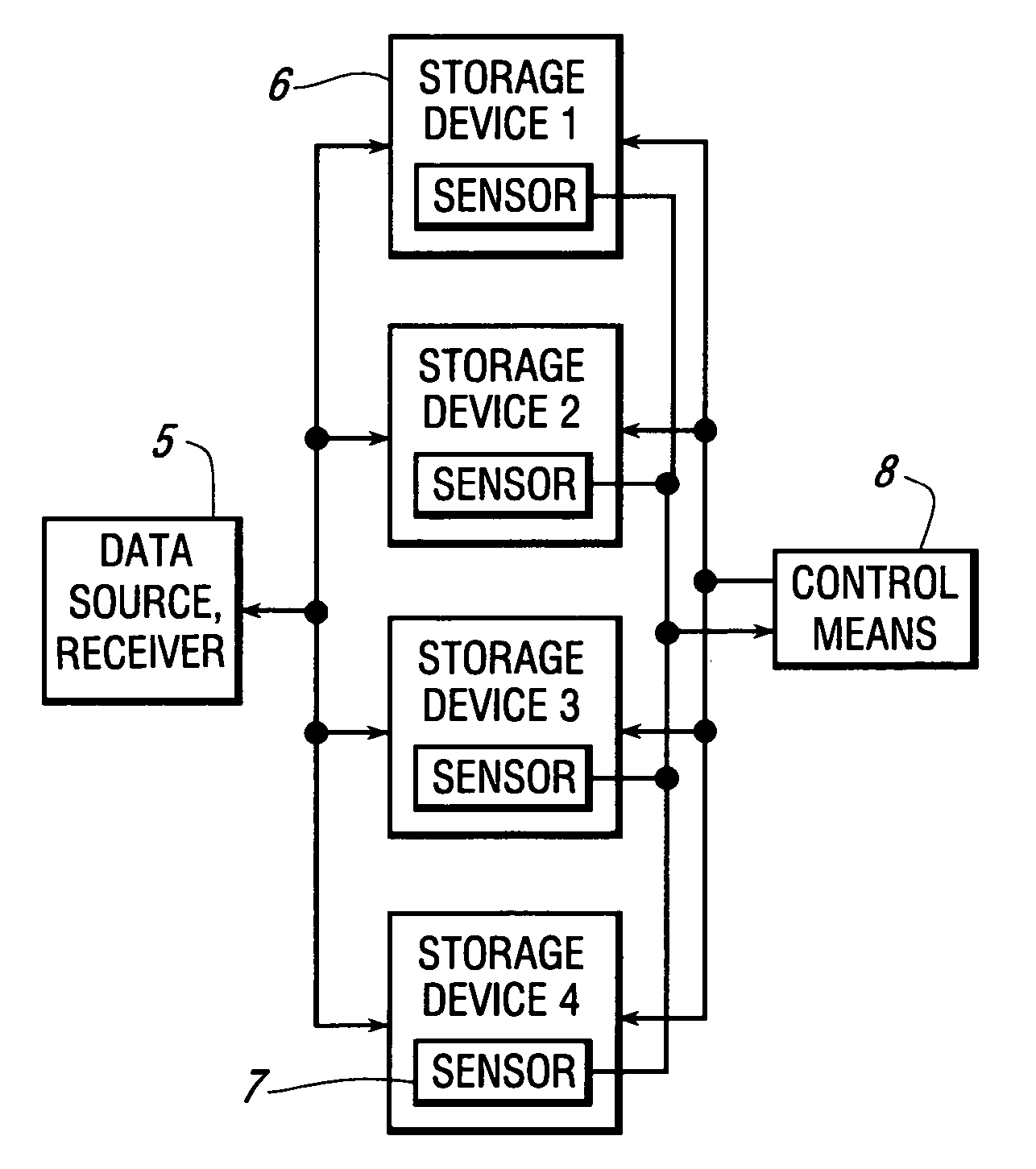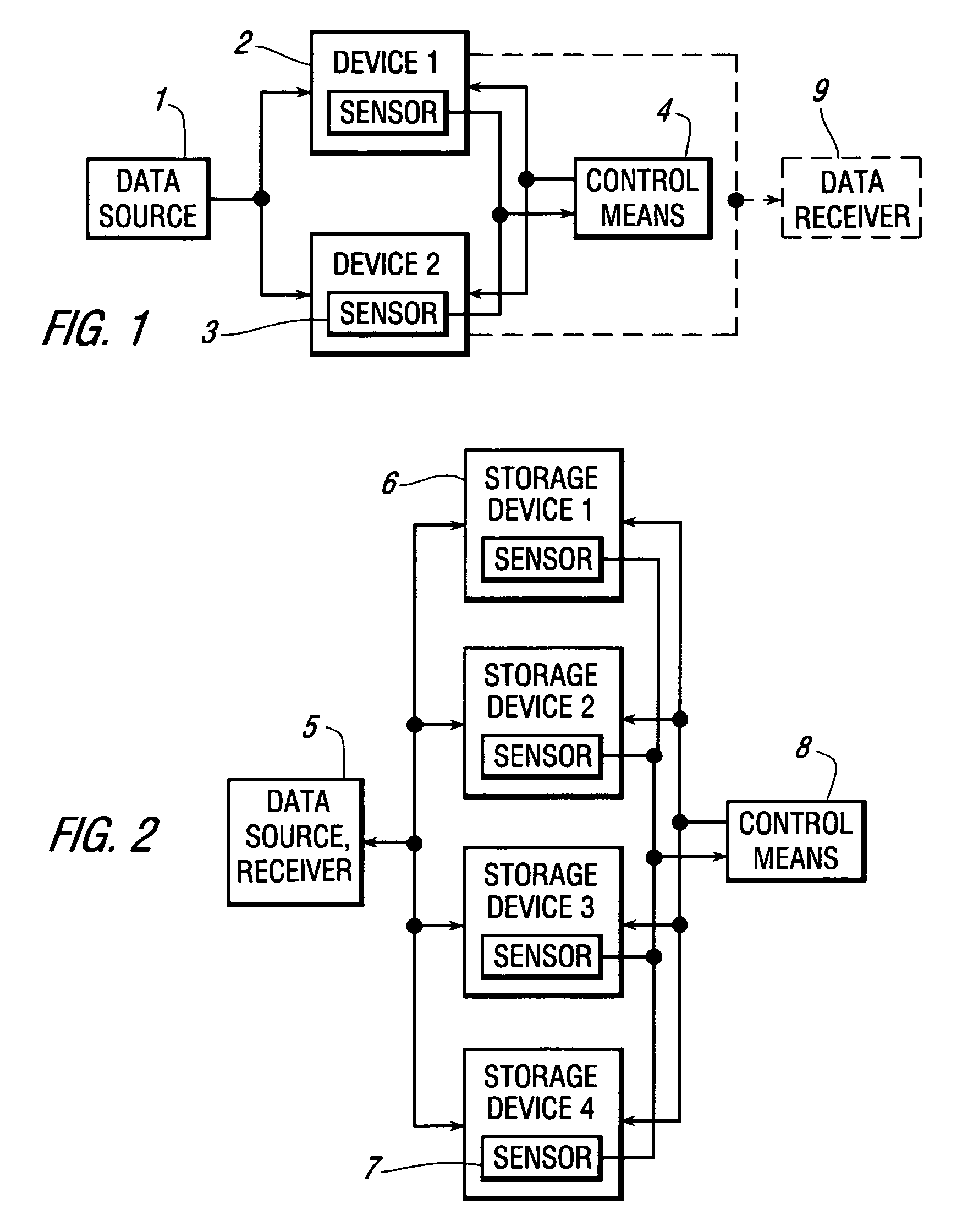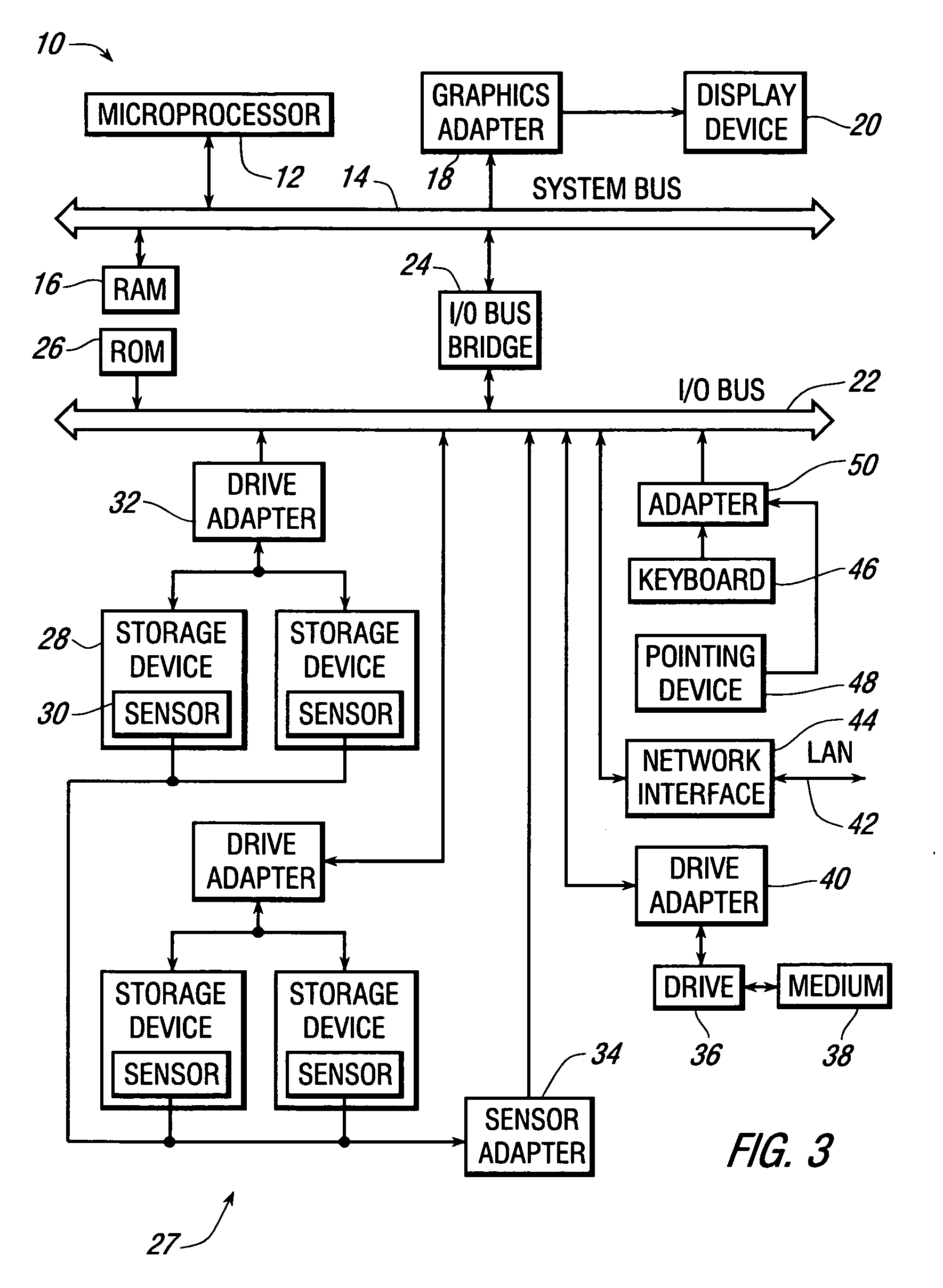Apparatus and method for achieving thermal management through the allocation of redundant data processing devices
a data processing device and thermal management technology, applied in the field of cooling of data processing devices, can solve the problems of increasing the difficulty of adequately removing heat from components, increasing the cost and system space required for their implementation, and increasing the noise level associated, so as to increase the effectiveness with which computer components are cooled, increase the cost and system space, and increase the effect of noise level
- Summary
- Abstract
- Description
- Claims
- Application Information
AI Technical Summary
Benefits of technology
Problems solved by technology
Method used
Image
Examples
first embodiment
[0034]FIG. 2 is a block diagram of data storage apparatus built in accordance with the invention. The data source 5 can provide data to any of a number of storage devices 6, each of which is provided with an associated thermal sensor 7 providing a signal indicating the operating temperature of the storage device 6. Again, the thermal sensors 7 are connected to control means 8, which selectively enables the storage devices 6 to receive data. In this embodiment, identical data is redundantly recorded in two of the storage devices 6, so that the data can be subsequently recovered in the event of the failure of one of the storage devices 6. In the absence of such a storage device failure, previously recorded data is read from either of the two storage devices 6 in which it has been recorded, being returned to the data source 5, which additionally acts as a receiver of stored data. The control means 8 determines which of the storage devices 6 are used for storing data and for reading pre...
second embodiment
[0067]FIG. 14 is a block diagram of a system including a remote network server 220 built to operate in accordance with the invention. The server 220 includes a number of conventional elements, which are similar to elements previously discussed in reference to FIG. 3, which are therefore accorded like reference numbers. The server 220 also includes nonvolatile storage in the form of a data storage device 222, which may be conventional, connected to the I / O bus 22 by means of a drive adapter 226. The server 220 further includes at least two communication adapter circuits 228, each of which is connected to the I / O bus 22 by means of a controller 230. Each of the communications adapter circuits 228 is connected to a number of client systems 232 through the public switched telephone network 234. The remote network server 220 is used to connect various client systems 232 with the LAN 42 or with another network, such as the Internet, that is reached over the LAN 42. The communication adapt...
third embodiment
[0070]FIG. 15 is a block diagram of a system including a server 250 built in built to operate in accordance with the invention. The server 250 is connected to receive calls from a number of client systems 252 through a wide area network 254, such as the Internet. The server 250 is additionally connected to a number of computer systems 256 through a LAN 258.
[0071]FIG. 16 is a fragmentary cross-sectional elevation of a computer system 256 within the system of FIG. 15. Each of the computer systems 256 includes a circuit board 258 having a microprocessor 260 and a number of other circuit modules 262. For operation in accordance with the third embodiment of the invention, the circuit board 258 also includes a thermal sensor 264 located in a region, such as adjacent to the microprocessor 260, where the operating temperature of a thermally sensitive portion of the computer system 256 can be sensed.
[0072] The server 250 periodically receives data indicating the operating temperature of eac...
PUM
 Login to View More
Login to View More Abstract
Description
Claims
Application Information
 Login to View More
Login to View More - R&D
- Intellectual Property
- Life Sciences
- Materials
- Tech Scout
- Unparalleled Data Quality
- Higher Quality Content
- 60% Fewer Hallucinations
Browse by: Latest US Patents, China's latest patents, Technical Efficacy Thesaurus, Application Domain, Technology Topic, Popular Technical Reports.
© 2025 PatSnap. All rights reserved.Legal|Privacy policy|Modern Slavery Act Transparency Statement|Sitemap|About US| Contact US: help@patsnap.com



